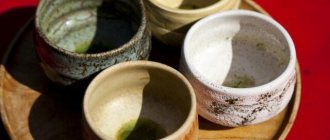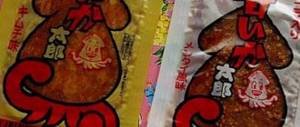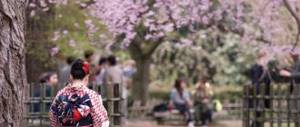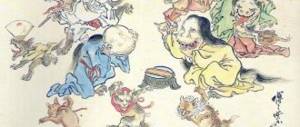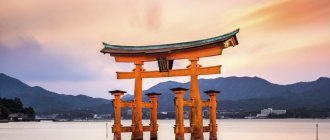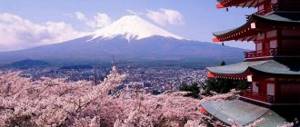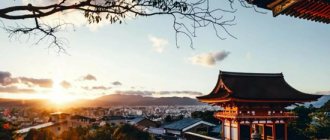HomeNews ATOR Bulletin
18.12.2020
In this country you can ski and sandboard in the desert, swim in the ocean and explore mysterious ancient cities underwater, go rafting on logs and jump with a parachute. We tell you what options for a fun and active holiday Japan offers.
LOOKING FOR JAPANESE ATLANTIS
Yonaguni, a small island in Okinawa Prefecture, is called the “Atlantis of Japan.” In the spring of 1985, in the coastal waters of Yonaguni, local diving instructor Kihachiro Aratake accidentally stumbled upon a strange object.
Not far from the shore he saw a huge stone monument. Its wide, level platforms, covered with patterns of rectangles and diamonds, turned into intricate terraces running down large steps. The edge of the monument went vertically down to a depth of 27 meters.
In 2001, a special scientific conference was held in Japan, where the majority of Japanese scientists supported the version that the found monument was a trace of an ancient civilization. However, the controversy continues to this day...
Tourists have the opportunity to form their own impression of the megalith: you can dive into the mysterious find and swim among its ruins.
The extreme nature of the underwater excursion will be given by the formidable underwater inhabitants - sharks and barracudas, the likelihood of encountering which is very high. But, according to local divers, predatory fish maintain neutrality towards tourists, without attacking them.
Weird cultural activities in Japan
The Japanese invented karaoke, which is popular all over the world. Karaoke boxes are common throughout Japan. They are isolated from outside visitors so that no one interferes with the free expression of their emotions and creative ideas. This is the simplest and most familiar entertainment in Japan.
The Poop Museum is a popular place for children and adults. Here you can see an exhibition of toilets and animal feces. And for children they came up with more active entertainment - you can put a hat in the shape of feces on your head and slide down the slide into the toilet. There are also video games in which feces are the main characters. In general, this museum features feces everywhere: from desserts to employee uniforms.
Dekotora has been growing in popularity in Japan in recent years. It literally translates to “truck decorated with light.” The Japanese decorate the most ordinary trucks with neon lights and use unusual paints. Due to developed technologies, the flight of imagination is not limited: finished cars resemble alien vehicles. Decotora exists not only in strange Japan, but also in other Asian countries, but probably no one will be able to outdo the Japanese in creativity.
It has long been known that the Japanese have their own concepts of beauty. Piercing and tattoos are very popular here, but it doesn't stop there. Many girls are willing to pay a lot of money for artificial fangs - they consider it especially beautiful. Another “decoration” is implantation of a donut under the skin, often done directly on the forehead. Of course, we are talking only about the form - the implant is a special saline solution.
The Japanese education system is popular among us, although not all customs of Japanese parents are usually copied. For example, the Japanese often use small children as mops. There is no violence - the baby simply crawls on the floor in a special overall with a mop attached to the front. The baby explores the world and cleans the floor - and parents don’t waste time cleaning.
CATCHING THE WAVE
You can surf in the coastal waters of several prefectures in the south of the country: Miyazaki, Chiba, Shikoku, Yamanashi (Lake Motosu).
There are also calmer options, for example, SUP surfing, which is easier and more accessible for beginners and unprepared riders. This is worth coming to Okinawa for.
There is a unique opportunity to combine SUP and yoga on Ishigaki, and a relaxing SUP trip is also guaranteed on Miyajima.
CONQUER THE SKY
Skydiving in Japan is a real aesthetic pleasure. Take note: jumping from a height of 3500 m in the area of Mount Fuji, you can see the sacred mountain itself, the Sea of Japan, and also Amanohashidate, a sand spit in the north of Kyoto Prefecture, which is one of the three famous landscapes of the country.
The jumping season lasts from April to mid-June and from mid-July to November. For details, visit skydiving-kansai.com.
You can also test yourself in a 60-second free fall from a height of 4000 m near Tokyo. It offers views of Mount Tsukuba and Mount Fuji, Tokyo and the mountain range to the north. Cost – from 33,000 yen. More information at Skydivefujjoka.jp.
Another option to see Japan from above is on the island of Hokkaido, about an hour's drive from Sapporo. At a local center where foreign instructors work, you can get training and jump on your own or in tandem.
Recreation and entertainment for Japanese men
An amazing and mysterious land of the rising sun with its customs incomprehensible to Europeans - Japan.
Since ancient times, Japanese men have felt their own importance and superiority over women called by “nature” to serve them and create comfortable conditions for them.
That is why modern Japanese men, as a rule, have fun away from home, devoting only weekends to their family. What kind of entertainment do Japanese men prefer?
They prefer to escape from everyday problems in all kinds of clubs, bars and restaurants; they visit them with work colleagues, thereby strengthening their corporate spirit and maintaining social connections.
The theater is very popular among the Japanese - a modern, unique world that you want to visit again and again. A wide variety of theaters allows for a choice for every taste: tragedies in the theater, naive comedies in the Kegen Theater, puppet shows in the Bunraku Theater. Unlike our traditions, nightlife in Japan is very short - after eleven in the evening, the majority of establishments close.
Another form of entertainment for the Japanese is online computer games, and this is a case where you can have fun without leaving your home. MMORPGs—multiplayer role-playing games—have become especially popular recently, especially since you can easily download mmorpgs for free.
See also: Okunoshima Rabbit Island in Japan
Sento baths are very common in Japan: such a bath must have a pool with very hot water, massage therapists for relaxation and preventive care of the body, these baths are very popular, the culture of body care comes first for the Japanese.
A popular form of recreation for the Japanese is also relaxation in the company of geishas: talented companions who are invited to maintain small talk, usually during a tea ceremony. The art of real geishas requires many years of training and improvement: dancing, acting, playing various musical instruments.
The more educated the geisha, the higher the cost of her services. Despite this, Japanese men quite often relax with charming geishas, whose ability to create an atmosphere of relaxation, comfort and peace can be envied.
A VIDEO that will help you relax too!
If you find an error, please select a piece of text and press Ctrl+Enter.
RAFTING ON THE RIVERS
A truly amazing rafting experience awaits everyone on the Kitayama River in Wakayama Prefecture, which is famous for its Kumano Kodo pilgrimage route and the most delicious plum wine in Japan. Fans of rafting will appreciate the “highlight” of this route: the descent along the Dorokyo gorge will be on wooden logs.
Rafting tours here run from May to September. Adult tickets start at 6,000 yen. For those who want less extreme, there is a light option: you can ride a boat through the gorge.
ENJOYING NATURE
Fans of ecotourism are recommended to go to Hokkaido to Shiretoko National Park, included in the UNESCO Natural Heritage List.
The name Shiretoko means “end of the earth” in the Ainu language of Hokkaido. These places have ancient relict forests that serve as habitat for the brown bear and Ezo deer.
It is also home to many species of rare seabirds and marine mammals.
EXPLORING CAVES AND ROCK PLATEAUS
The vast lands of the Akiyoshidai karst plateau near the city of Mine in Yamaguchi Prefecture are like nothing else in Japan. 350 million years ago, the warm southern sea splashed here, coral reefs grew...
When the water receded, the wind and rain began to carve an alien hilly landscape dotted with sharp stones from the limestone. Today it is a national park and a specially protected natural monument.
This is where Akiyoshido, a national treasure and the largest cave in Japan, is located.
Its length is 9 km, but only a one-kilometer path is accessible to tourists - with good lighting and paved paths. In this mysterious underground kingdom, accompanied by guides, you can walk among waterfalls, limestone terraces and pools filled with water, stalactites and stalagmites hanging from the ceiling.
Another local attraction is the rocky Akiyoshidai Plateau: bright green in spring and summer, reddish-yellow in autumn and covered with snow in winter.
In the old days, the residents of Yamaguchi grazed livestock here and grew pampas grass to cover their roofs. And at the end of winter, the old grass was burned to renew the pastures and prevent them from becoming overgrown.
This is a common practice in Japan, but here the Akiyoshidai Yaki fire festival, held on the third Sunday of February, is dedicated to this event. By the way, even before the pandemic, people came here wearing protective masks to help protect them from smoke and ash.
Japanese TV Shows: Creativity Comes First
Japanese TV shows deserve special attention. The Internet is full of collections with the craziest shots - you can’t deny the creativity of the Japanese. Very polite and reserved in everyday life, the Japanese create real madness in front of the camera.
Fake breasts and shorts
For example, in this show the girl must pull up her shorts without using her hands. To make the game more piquant, the girl covers her fake breasts with her hands - if she decides to help herself, the viewer will have something to look at. The host of the show also pleases the viewer - she is wearing only a swimsuit.
Eat a cicada
The Japanese also have more violent shows. Two girls compete in the strength of their lungs: in a transparent tube there is a dried cicada (the information that this is a live cockroach does not correspond to reality). The task is to force the opponent to swallow the insect.
Centrifuge principle
This show involves men - they are both spectators and participants. Spectators are dressed up in stockings and watch the main characters eat noodles. Everything would be fine, but they do it in washing machines. In turned on washing machines. The winners of this game can be safely enrolled as astronauts, and only the authors of Japanese TV shows could come up with such entertainment.
Show for adults
Shows rated 18+ are very popular among the Japanese. And here the fantasy works to its fullest: in this show, girls lie almost topless on a toy railway so that a train passes under their breasts. This is a kind of test for breast size. If the train cannot pass, it is a defeat.
Japan seems strange to us, but we also seem strange to the Japanese. Each culture has its own traditions and unique history. The Japanese cannot be denied creativity - only they could come up with such unusual entertainment. And Japanese TV shows receive millions of views far beyond the borders of the Land of the Rising Sun.
LIVING IN A JAPANESE CAMPING
Japan is doing very well with camping. Even more than good.
There are more than three thousand such tourist accommodation facilities in the country for every budget and taste: from glamping with cottages or tree houses to affordable tent camps.
Prices for small campsites start from 400 yen per person to 3,000 yen for the entire site.
LET'S SKI
Skating in Japan has its own characteristics. Firstly, the number of tracks does not matter, because the main thing is what is located next to the tracks. For example, at the Rusutsu ski resort on Hokkaido, the slopes are located low, so that the slope actually runs among the trees.
Unlike Europe and Russia, it is not spruce and pine trees that grow on the slopes, but birch trees, due to which air pockets do not form around tree trunks. Moreover, due to the low mountains, there are no avalanches in Rusutsu, which freeride lovers will appreciate. Bonus: fantastic views of the volcano.
According to professionals, thanks to the soft, light and airy snow, skiing in Japan is more like surfing, which, by the way, is confirmed by the local ski equipment. Local boards are different from the usual ones: they are dovetailed and wider.
Unlike ski slopes in Europe and Russia, the slopes in Japan are open all day: you can ski from 9 am to 9 pm. There is also a difference in the marking of the routes: instead of the usual colors indicating the degree of difficulty, in Japan diamonds are used. One diamond is a difficult route, two diamonds are a very difficult route. Three diamonds - the track is intended for skiing only by professionals.
Mesmerizing mountain landscapes and thick snowfalls make skiing special at the Niseko ski resort, where approximately 15 m of snow falls per season. This is more than anywhere else in Japan!
Today Niseko is a popular skiing center both in Japan and throughout Asia. The main resorts are located on Mount Niseko Annupuri.
The largest of them (Grand Hirafu, Niseko Village and Annupuri) occupy the south-eastern slope and are connected to each other by ski slopes and bus routes. Well, the views of the huge Yotei volcano will be remembered by skiers for a long time.
Unusual and strange things for us that are considered absolutely normal in Japan (19 photos)
What is considered normal in Japan may come as a surprise to people in other countries. We invite you to delve a little deeper into Japanese culture and traditions to find out what things that are considered ordinary for the Japanese may come as a surprise to those who were not born and raised in Japan. 1. They say the same phrase that means both “yes” and “no.”
photo: pixabay.com
In Japanese, “yes” is “hai” and “no” is “iie”. But the Japanese also often use the phrase "ii desu" or "kekkou desu", which can mean "yes" or "no". How do you know what the answer is? You need to pay attention to the context, as well as how it was said. Intonation and/or gesture will help you understand what the speaker means.
2. Blood type in Japan is used instead of a horoscope
photo: hollyzsketches/Instagram
While in other countries blood type is asked only for medical purposes, in Japan it is used to determine a person's personal qualities more often than a horoscope.
Thus, blood type A (II), which most Japanese have, means that a person is well organized and shy. Blood type O (I) is an optimistic and ambitious person, while the rare blood type AB (IV) is eccentric. Blood type B (III), according to the Japanese, characterizes a person as selfish, and may not be very favorable in the eyes of the inhabitants of the Land of the Rising Sun.
3. Christmas in Japan is like Valentine's Day, and it is customary to celebrate it at KFC
photo: annegvall / Instagram
In most countries, Christmas is celebrated with family, but for the Japanese it is another holiday like Valentine's Day. There was a time when hotels were fully booked on the eve of Christmas because couples wanted to spend the night together.
Another Christmas tradition among the Japanese is to eat "Kentucky fried chicken" because since December 1974, KFC Japan has been advertising its fried chicken as a Christmas dish.
4. A small face is considered beautiful in Japan.
photo: nanao_official / Instagram
It can be confusing for a Westerner to be told that they have a small face. On a Japanese TV show where Madonna took part, the host told her that she had a small face. She answered in confusion: “But I have a big heart!” She probably took his words as something disapproving, although in fact he was giving her a compliment.
5. Long-sleeved kimonos are only for single girls
photo: miyakoya.obihiro / Instagram
Furisode, or long-sleeved kimono, is worn only by unmarried girls. They are usually rented or purchased by parents for their daughters to wear on Coming of Age Day, the celebration of their 20th birthday.
Some people wrap colorful fabric over the wide belt to attract attention. This is not permissible for married women, as it is perceived as a desire to be attractive to men.
6. Girls and boys are almost always brown-haired and wear bangs
photo: 2525nicole2 / Instagram
The faces of young Japanese people are almost always decorated with bangs (or mae-gami). This may be due to the fact that they consider small faces to be beautiful.
Although most Japanese are born with black hair, young people commonly dye their hair brown, calling the trend "tapatsu", which literally means "tea hair".
7. Japanese lawyers wear special gold badges
photo: cos.jd/Instagram
In other countries, lawyers may only have business cards to prove their qualifications, but in countries such as Japan and Korea, lawyers have special badges that they wear on the lapel of their blazer.
8. Little finger and red thread
photo: weddingisland_ang / Instagram
As in Chinese and Korean culture, the Japanese believe that God ties the fingers of those destined for each other with an invisible red thread. The thread may stretch or get tangled, but it will never break.
Regarding the little finger, if a Japanese person asks “Is she yours...” and gestures with his little finger, then this means that he means “girlfriend”, “lover” or “wife”. Unless you're talking to a member of the Yakuza, the Japanese mafia, where that means a lover, girlfriend or wife has been beheaded.
9. Sunglasses in Japan are usually only worn by celebrities.
photo: yuuukiiiinaaa / Instagram
Even if the sun is shining directly into your eyes, the Japanese prefer to wear an umbrella rather than sunglasses. In Japan, it is believed that this fashion accessory can only be worn by very stylish people, celebrities or foreigners.
10. The drainage canals in Japan are so clean that some of them even contain koi fish.
photo: Imgur
It is common knowledge that Japan is a country of cleanliness. But the koi fish that live in the drainage channels take Japanese cleanliness to a new level. And the amazing thing is not only that koi fish can live in clean water, but also that they themselves are worth a lot of money, and no one even thinks about catching them for sale.
11. Hot towels in restaurants must be used before meals.
photo: tub0m1 / Instagram
In high-end Japanese restaurants, diners are given a towel (or oshibori) soaked in hot water. Unlike napkins, which are usually meant to be used to wipe your mouth after eating, they are used before eating to wash your hands. Wiping your face or neck with such a towel is considered bad manners.
12. The Japanese go to temples and churches for a variety of reasons.
photo: paul.pc/Instagram
The average Japanese person spends their entire life visiting religious places for various reasons. To celebrate children's birthdays on the child's 3rd, 5th and 7th birthdays, they visit the temple. Weddings are usually held in a church, and sometimes in a place simulating a church, which is intended only for wedding ceremonies. Funerals are often held in churches.
13. In Japanese makeup, blush should be more pronounced than eye shadow and lipstick.
photo: sao__526 / Instagram
Japanese girls and women prefer softer lip colors rather than bright or dark ones. However, they like to deepen their blush because it makes them look energetic, like they just got out of a workout, while still looking fresh and not sweaty.
14. Raw eggs are quite common in Japanese dishes.
photo: ulf_timmermann.1975 / Instagram
People are always wondering, “Do the Japanese really eat raw eggs?” Yes it is. Raw and half-raw eggs are usually eaten with rice, meat or noodle soup.
The simplest dish is when a raw egg is mixed with rice, soy sauce, seaweed or furikake (dried Japanese seasoning). This dish is considered a bachelor's dish as it is easy to prepare and eat alone.
15. There are almost no trash cans in Japan, but it is incredibly clean.
photo: m_saclla / Instagram
It can be confusing for tourists that there are so few trash cans in such a clean country. They are usually seen near vending machines. Sometimes they are located near supermarkets and can only be used by them.
The Japanese have a habit of cleaning up after themselves and bringing all their trash home, where they dispose of it properly.
16. “Will you wash my underwear?” - this is a marriage proposal
photo: © shutterstock.com © depositphotos.com
To some of us this may seem offensive, but to the Japanese it means that a man trusts a woman enough to entrust her with one of his most personal possessions. A rather strange way is to invite someone to look at the not so pleasant side of a person’s life and ask him to help fix it. But for the Japanese this is normal.
17. “Will you make me miso soup every day?” - this is also a marriage proposal
photo: cinderellastorywedding / Instagram
Someone might think, “Is he looking for a cook for his home?”, but this is an indirect way of making an offer. The Japanese eat miso soup (misoshira) every day, but each home has its own preferences regarding the recipe. This offer means that a person is entrusted with one of the most important parts of his daily diet.
18. When eating ramen or soba, you should eat the noodles with a slurp.
photo: ramenyalb / Instagram
Even though the Japanese are considered a quiet culture, they believe that noodles should be eaten with a slurp. This is justified by the fact that in this way the hot noodles cool down when they enter the mouth and come into direct contact with the tongue. This way it can be enjoyed while the rest of the bowl is still hot. And some also believe that slurping is the best way to enjoy the flavor of soba.
19. Some people need more clothes in the summer
photo: Martin Goodwin/Flickr
Summer in Japan can be very hot, especially in Osaka and Kyoto, but that doesn't stop some Japanese women from wearing more clothing to protect their skin from the sun's rays. In most countries, the onset of summer means it's time for open summer dresses, but Japanese women prefer not to sunbathe and eliminate the possibility of getting skin cancer.
WE STUDY HISTORY AND CULTURE IN LITTLE-KNOWN CORNERS OF THE COUNTRY
For beautiful nature, seascapes and excellent cuisine, which is valued in the country, you should go to Sado Island or, as the Japanese themselves call it, Sadogashima. The island is located in Niigata Prefecture and can be reached by regular or high-speed ferry.
Sado is one of the most little-known parts of Japan. There are many sunny days here, there is no sweltering heat in summer, there are hot springs and beaches. But the main purpose of traveling to Sado is history and culture. There are 281 temples on the island, the most famous of which is the Hasedera Temple, famous for its statue of the goddess Kannon. By the way, you can visit Hasedera and make a secret request to Kannon at night.
There is also a traditional Japanese Noh theater on Sado. This theatrical art originated in Japan in the 14th century and was popular among the samurai and the aristocracy of the shogunate. Noh theater festivals are still held on Sado, and almost a third of all Noh theater scenes are staged on this island.
History fans will appreciate the excellent interactive History Museum, where exhibit dolls react to the movements of visitors, the ship museum, and the authentic fishermen's quarter. To remember your visit to Sado, you can send a postcard home from the local post office. Sado also has excellent sake breweries with tastings, wonderful orchards and many master classes.
Fantasies of Japanese men
Japan is perhaps the only country that still manages to maintain the image of the most mysterious and mysterious country in the world. Any foreigner who comes here, having already heard and read a lot about the amazing island state, literally gets drunk from the concentration of cognitive dissonance per square meter. It’s strange, because neither Korea (even North Korea), nor China, nor the rest of its Asian neighbors have this aura of alienness. Of course, we are interested: how do they live? What's on their mind? The last question arises more often the longer you stay in this country. From time to time, well-known orientalists, for example, Vsevolod Ovchinnikov, try to break down for us, centimeter by centimeter, the train of thought of the Japanese, but I have long understood: it is pointless to find any general pattern. Let's at least figure out what kind of women attract aliens. What kind of women excite the blood of a samurai?
I feel like many people are smiling. Of course we are!
And we!
But no! Who? You will learn about this a little later...
Google will return thousands of answers to the query “Japanese beauty.” But I have something better - a Japanese erotic magazine (not porn). I am sure that such editorial staff employ professionals and know how to attract their target audience - men. By the way, cognitive dissonance is present even here: porn magazines, not to mention erotica, can be seen in any tiny supermarket. I bought mine from one of these. At first I just wanted to tell and show what was inside (have you often held such an exclusive item in your hands?) And then I thought that it would be more correct to first talk about my own impression of Japanese women. Otherwise, what you see will not produce the desired effect.
I want to emphasize right away: I have never been purposefully interested in Japanese culture. Like many, I had a standard set of stereotypes acquired after watching my favorite movie: petite Japanese women are graceful, naturally fragile and very sophisticated. I reviewed “Memoirs of a Geisha” five times, but not because of admiration for Japan and geishas, but because of the idea: a little girl, a hostage of circumstances, despite everything, followed her dream and love... Later, when real Japan entered my life, pouring with burning tears, I watched this film fifty times more, but that’s a completely different story...
And so...Japanese. Inspired by the view of the marvelous cherry blossoms of Kyoto, feeling almost like the heroine of “Memoirs,” I asked my Japanese friend if he had seen the film. He recalled for a long time: “Is this the film that was made by an American, and the Japanese women were played by Chinese women? I do not remember. I think I tried, but I fell asleep.”
It's funny, but the image of my beautiful Japanese women was created by three Chinese women. And the ugliest geisha, Pumpkin, was played by a real Japanese woman - isn’t it true, there’s a lot to dislike about this film among the Japanese? To be honest, I still don’t really differentiate between Japanese, Chinese and Koreans.
When I first arrived in Tokyo, my wonderful illusion about unearthly Japanese women began to burst like soap bubbles...
Firstly, Japanese women are quite tall. With my height of 1.60, I didn’t feel like Gulliver in the land of Lilliputians, like, for example, in Vietnam. Many Japanese women are taller and... fatter. Thin fallow deer are quite rare, with “broad bone” predominant. As my Russian friend, who has lived here for twenty years, says: “As soon as they see all the beautiful ones, they immediately grab them in their arms and go straight to a modeling agency.”
Secondly…
The image of a petite woman with innate elegance melted into the categorical reality - careless comfort prevailed over the vaunted Japanese sophistication.
Thirdly…
I forgot to say about anime. This is an inexplicable fascination with cartoon characters. Especially heroines.
You know, it’s so strange to see grown men in business suits coming into a store after work and gawking at the shelves with flirty figurines from cartoons. By the way, the more intimate parts are exposed, the more expensive the figurine is.
The craze could not help but be reflected in real life. Even adult girls of 25-30 years old can find a touch of kawaii (kawaii transcription means very cute) in clothes, makeup, and accessories.
Many young girls try to be like cartoons. An entire industry of hostess bars and something hotter is built on this.
**
**
To summarize: in Tokyo it is still possible to meet elegant women in traditional kimonos and shoes, but as a rule they are over fifty.
And the layer of kawaii cuties is more a part of the industry and a job than a way of life. Lolita-shaped beauties can be found in special areas and establishments. By the way, they really don’t like being photographed. Therefore, the photo is from the back.
Ordinary Japanese women are not much different from women in other countries. Young women don't bother much. They are relaxed and free. My favorite shot, I call it “Sex and the City.” Tokyo"
So what erotic fantasies do men's magazines broadcast to their readers? I asked myself this question and bought this number.
The magazine was sealed in cellophane, so I didn’t know what was waiting for me inside - porn or erotica.
I don’t speak Japanese, but from the context it seemed to me that this was something like our MAXIMa - light erotica mixed with articles on various topics: from sports and cats, to Trump and the imperial family - but we are not interested in that. We are interested in the beauties presented there.
Go!
Separately, I would like to emphasize the strange layout: in addition to the fact that the magazine is carefully packed in a wrapper, everything “spicy” inside is also carefully sealed and in order to get to candid photo sessions, you need to specifically gut the contents - it’s inconvenient.
So, for the sake of this nonsense, similar to an ordinary lingerie catalogue, I had to work hard to carefully put the pages together. An important detail: there are no European faces in the magazine at all, except for this one (circled in green) - and even then I’m not sure that this is not a Japanese woman.
Here is another carefully “walled up” secret of the open secret
In order for my post to pass censorship, I had to cover some places with buttons))) A characteristic feature of the figures is the absence of a waist, but this is national and has been praised in every possible way for many centuries. It was not for nothing that geisha wrapped multi-meter belts around their waists to hide the slightest hint of smooth lines.
Wow, I can imagine what would happen if one of our people posted a photo like this on Instagram)))
It seems to me that there is no Photoshop in the photo at all - except for the nipples. Asian women have dark brown ones. And pink ones delight men (don’t ask me how I know this)))
No comment
Instructions for handling the fair floor
And now a riddle: who do you think it is? Man or woman?
I don’t know what I would have thought if I hadn’t been familiar with shemale (this is, of course, a topic not only for a separate post, but probably for a book). Shemale (from the English “she” - she, “male” - male) is a type of male prostitutes , for the purpose of commercial gain, they insert breast implants, look like women, but do not take hormones so that the necessary male organs work - this increases competitiveness in the market for such services. Don’t ask how we met - I’m an ordinary Russian woman, an open homophobe, and I couldn’t imagine that something like this could happen to me. I had no idea about this subspecies of the most, uh, ancient profession. Moreover, we became very good friends - life is truly unpredictable. So, there are a lot of these shemails. They have their own quarter of residence. They walk freely around the city and take the subway. And now in every incomprehensible situation I suspect that there is a shemale in front of me.
And I encounter incomprehensible situations not only on the pages of this magazine. Go back, look again at your hands, face...
Considering how openly they live in Tokyo, I wasn't too surprised to see him here...
And again cognitive dissonance! As soon as I psychologically accepted the possibility of this character in a men's magazine, it turned out that she was a woman! Famous weightlifter...
In general, after studying the magazine, I realized that the Japanese are very loyal and unpretentious in many aspects. Photo sessions are simple and straightforward
I don’t know what conclusion you will draw after what you see. But I was once again convinced that Japanese men, like all men with a normal psyche, like ordinary women, not disfigured by outside interference. Yes, no one argues that European women are more spectacular, but as you noticed, they are not in this magazine and Japan still retains the status of the most mononational country in the world.
Therefore, do not envy “Brazilian” butts, “African” lips, do not make yourself into chocolate mulattos and the list goes on... You are you. You are unique and do not need adjustment.
No, this is not a banal appeal and a sweet end to the post. I really think so.
All the kawaii girls with angelic faces and chiseled figures presented in the text are actually boys, colleagues of my friend (**I took the photo from the site where my “star” works. He is there too, but I won’t say who exactly )))) They have a lot of fans, believe me, but do you really need them? Therefore, do not be led by someone’s sick fantasies that were formed during the period of teenage viewing of porn sites. Don’t try to replicate the waists, legs and baby skin of Instagram goddesses in real life – they themselves can’t do it. Love yourself and everything that nature has given you. And let this be the main protection against abnormality, which is already too much around.
Thank you for your attention, your SPRINGinTOKYO
